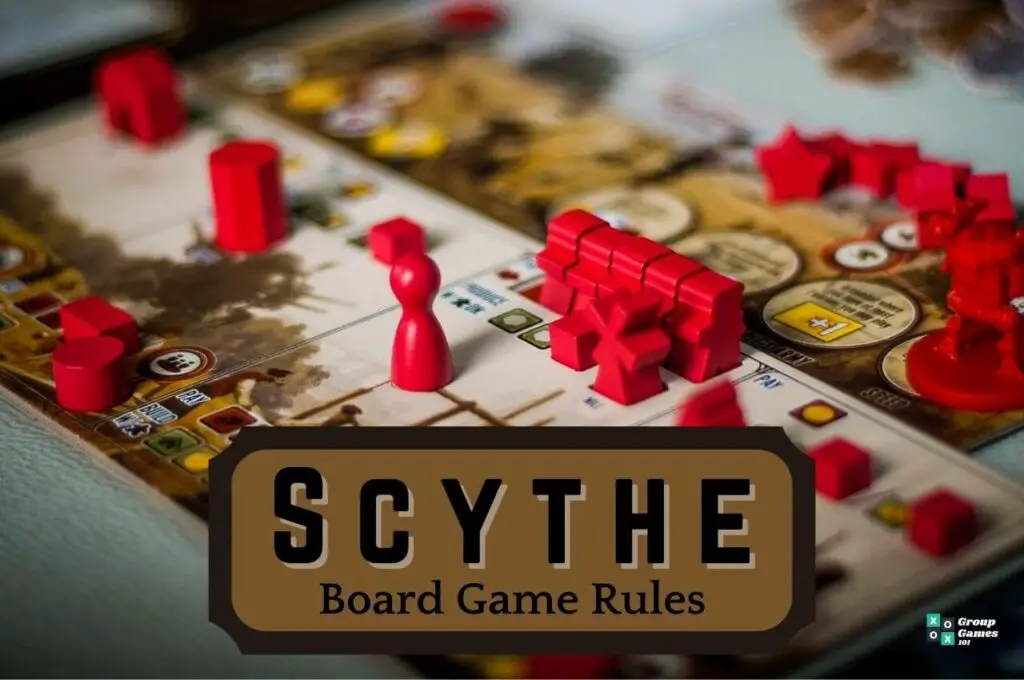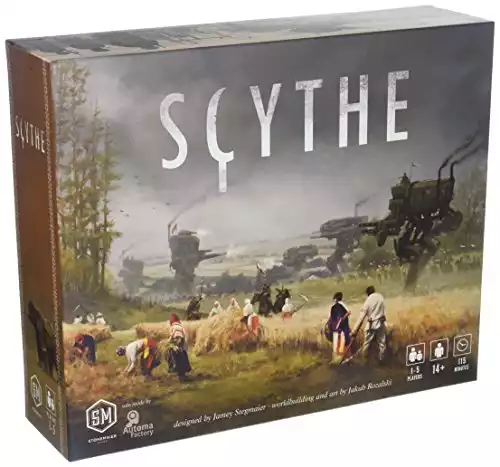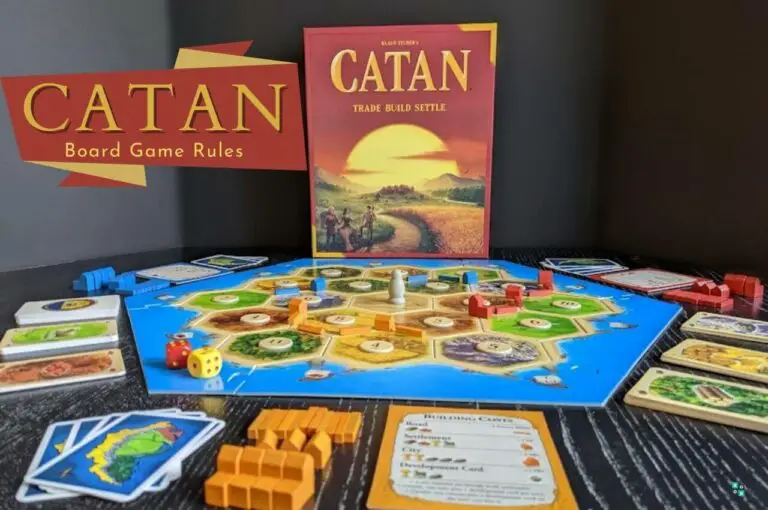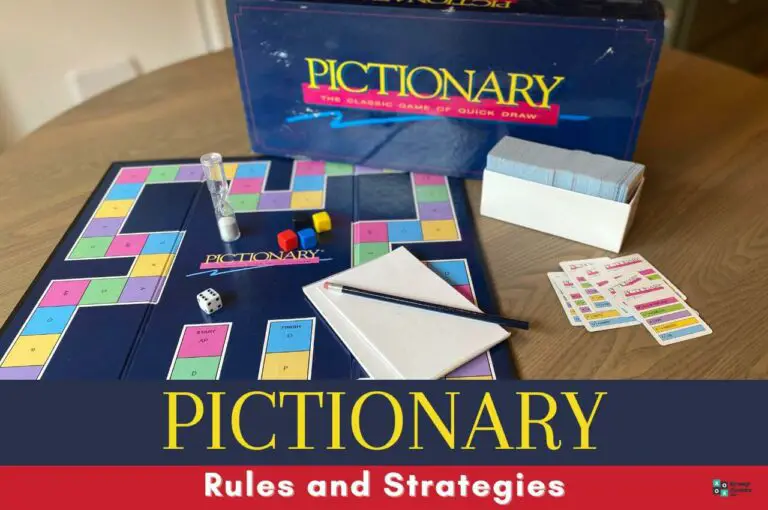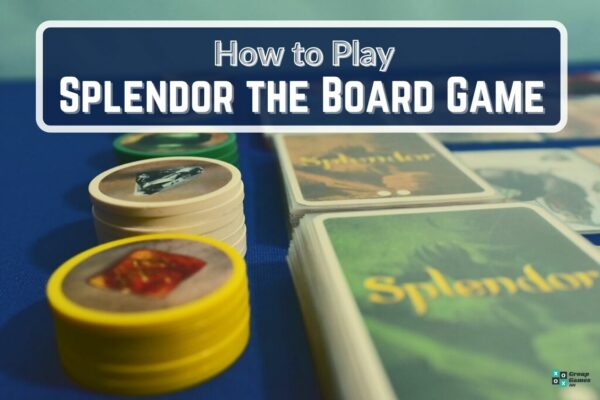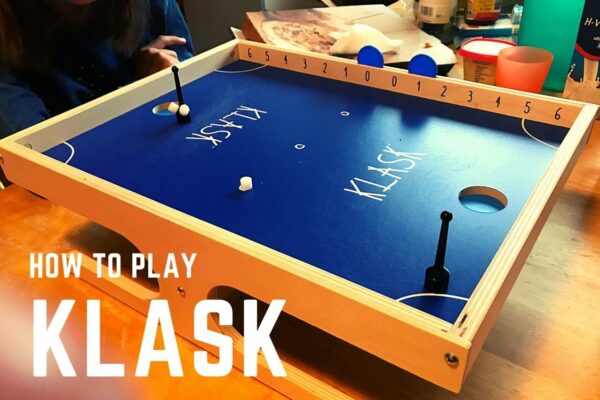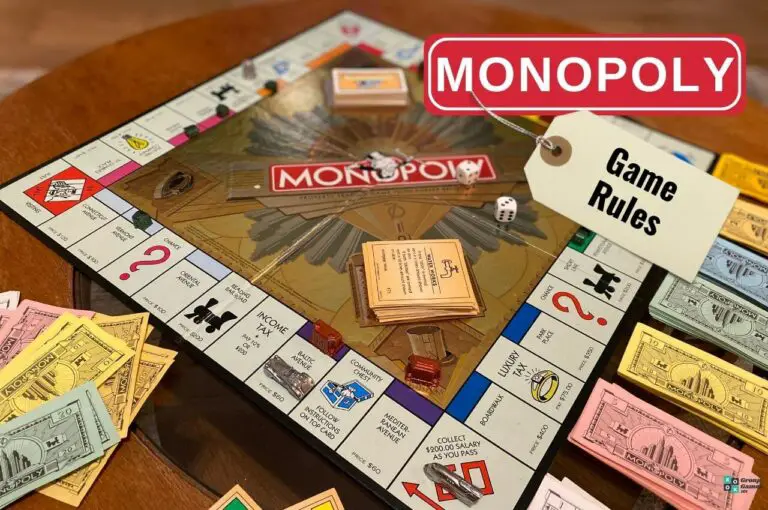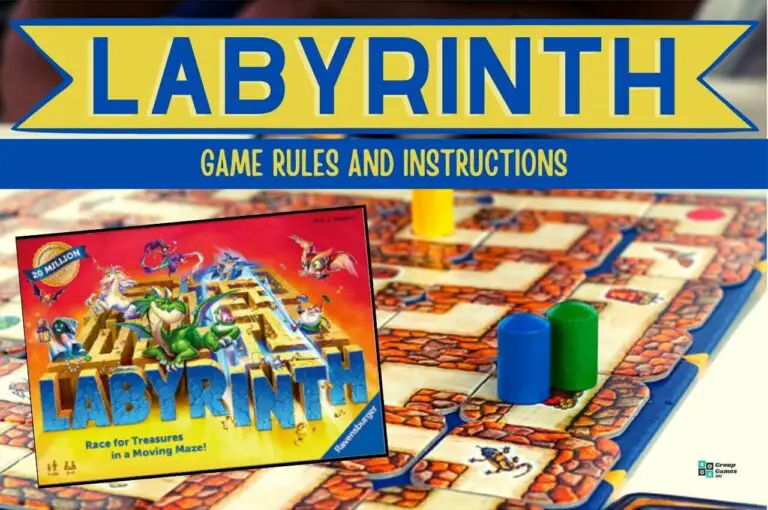Welcome to Scythe, the board game where you get to assume the role of a leader in an alternate-history 1920s setting. Read our guide on the Scythe rules to learn how to play.
In this strategy game, players compete for control of resources and territory in a post-apocalyptic world. No need to worry about zombies, just a battle of
wits and giant robots known as mechs.
This Scythe rules guide will cover the following main topics:
- What is Scythe?
- What you’ll need to play Scythe
- Scythe board game rules and scoring
- Video tutorial on how to play Scythe
What is Scythe?
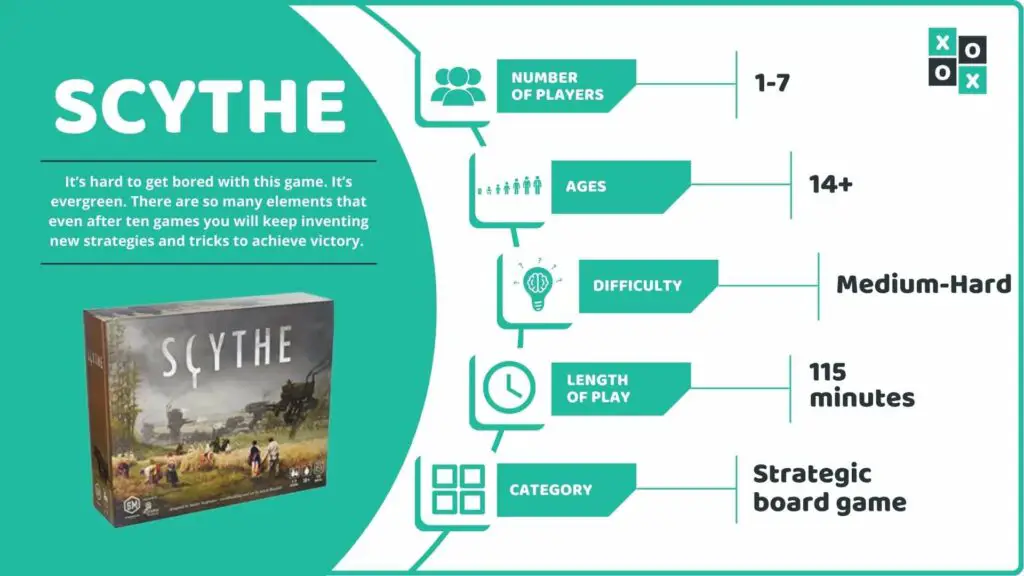
Scythe is a board game set in the alternate history of the 1920s around a fictitious capitalist city state named The Factory in Eastern Europe. The air is still filled with dark ashes and unrest after the First World War. The Factory was deeply involved in the war supplying heavy armory and now it has closed its doors that consequently drew the attention of neighboring countries.
Each player in the game represents its own faction – who are all trying to regain their fortune and power around the land of The Factory. They do so by conquering territories, building new infrastructure, winning combats to increase popularity, and finally establishing themselves as the new leader of Eastern Europe.
Number of players: 1-7
Age group: 14+
Difficulty: Medium to Hard
Length of game: 115 minutes
Similar to: Kemet, Twilight Struggle, Gaja Project, Terra Mystica
Main objective: Whoever earns the most wealth ($75 approximately) in terms of coins and places all the 6 stars on the Triumph track wins the game. You can earn these coins with every star being placed, every territory, and every 2 resources being controlled.
Why we love it: It’s hard to get bored with this game. It’s evergreen. There are so many elements that even after ten games you will keep inventing new strategies and tricks to achieve victory.
As an additional bonus, you get to explore the 1920s’ Europe of ‘farming and war, broken hearts and rusted gears’ through the magnificent artworks of Jakub Rozalski.
A Brief History of Scythe
Designed by Jamey Stegmaier and published and funded by Stonemaier Games via Kickstarter in 2016, Scythe has seen a number of expansions.
You have choices between different game variations like Scythe: Invaders From Afar, Scythe: The Wind Gambit, Scythe: The Rise of Fenris, Scythe: Digital Edition and Scythe Encounter.
What You’ll Need to Play the Scythe Board Game
Scythe is easily available in online stores like Amazon, Ubuy. A base kit of Scythe Board Game for 1-5 Players has:
- 5 Character miniatures
- 20 Mech miniatures
- 80 Coins
- 138 Playing Cards
- 155 Tokens and Other Pieces
- The board and mats
Scythe Layout
The Scythe game board rules are quite complicated, it’s important to understand some basic concepts first.
Territory
Hexagonal shapes on the board named after Farm, Forrest, Mountain, Tundra, Village, Lake, and Factory.
Home base
The game starts from home bases assigned to each player. As these are not included as territories, you are not allowed to carry any unit or build a structure on the home base.
Control a territory
To control an additional territory, you have to place at least one unit or structure there. Not more than one player can control the territory at the same time.
Resources
Only food, oil, metal, and wood are counted as resources here. You can spend your resources from one of your controlled territories to complete an action on another one.
Supply
When a resource is spent it is removed and placed as general supply at the side of the board. And if you produce or trade a resource it will be placed on that territory.
A resource cannot be removed from the board if it’s already produced once.
Factory Card
The Factory is the centre attraction of the board. When Move actions are complete and a character is on the Factory, the player gets a chance to look and choose one Factory card from the board.
Types of units
The game has 3 types of units each one having its own characteristic features. All these units can move freely on the board except for rivers or lakes and they can carry unlimited resource tokens with them.
- Character: A player is represented in the game as a character, the miniature pieces available in 5 different colors. Each player comes from a faction with a goal to acquire unclaimed regions around the factory by engaging in combat and encounters.
- Mechs: Mechs can engage in combats and carry along with them as many workers needed. But they cannot help to move a character.
- Workers: Workers can produce more workers and resources, deploy mechs and build infrastructures.
Factions
There are 5 factions each with different abilities: Nordic, Rusviet, Crimea, Saxony, Polania. Factions will be dealt with each player after a random shuffle. They will sit near their home base around the board with faction mat and player mat placed next to them.
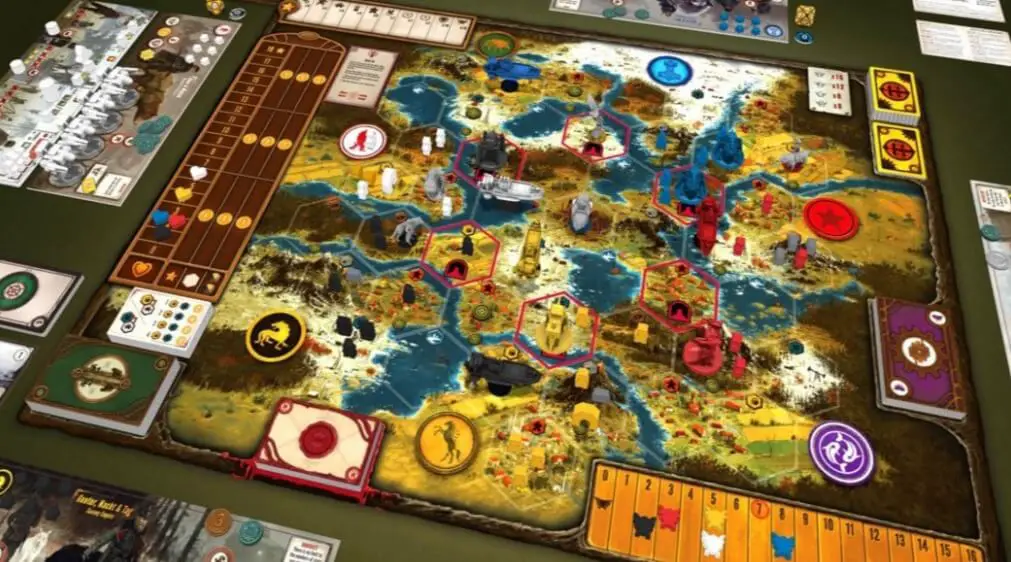
Scythe Board Game Rules and Gameplay
The game has players taking turns clockwise and no second rounds or phases. It’s suggested to go through a Quick-card before trying to figure out every little detail.
What to do when your turn comes:
- Move your Action token to a different position on the action mat than your previous turn.
- Follow one top-row action
- Follow one bottom-row action
You may take one or both or none of the actions but moving the action token is compulsory. When you take an action, first pay the cost and earn benefits.
Top Row Actions
- Move:
You can move up to 2 different units from home base or controlled territory to another one and gain $1. During movement a unit may transfer resources and mechs can transfer any no of workers. In that case, only the mechs’ movement is counted.
If your character moves into the opponent’s territory, it can open up different scenarios:
- Controlled by workers:
The opponent will retreat all its workers to home base leaving their resources there. You will lose one popularity for each worker as they are not happy to retreat.
- Controlled by a structure:
You can move any unit to this territory and gain total control.
- Controlled by Character and/ mechs:
The opponent still has partial control. Once all your move actions are done, if you still share territory with the opponent, combat happens.
- If a worker is placed on the board once, they cannot be taken back to the mat anymore.
- By default, no units can be moved back to any home base on the board including yours.
Three Major Top Row Actions
Bolster
By paying $1, you get 2 power levels up in the Power track. You use this power later in combat.
Trade
You can earn any 2 resource tokens and place them on any of your controlled territories with one worker by paying $1. Also, this increases your popularity by 1 in the Popularity track that can be used in encounters as commodity.
Produce
By paying the cost, you can pick 2 different controlled territories where each worker can produce one resource token.
You should pay the full cost to take a Produce action. If you don’t have enough resources or coins, take another action.
Bottom Row Actions
- When a player is taking bottom row action, the next player can take an overlapping turn.
- In most bottom actions you gain one coin when you pay for that action.
Three Major Bottom Row Actions
Upgrade
You can upgrade to build stronger infrastructure in the empire using oil resource.
Deploy
By deploying mech ability using a metal resource, you get workers’ protection, empire expansion, and new abilities for your characters.
Build
Building new structures is one of the major objectives of this board game. This way you increase your action power and control over territories and bring end-game bonuses. Wood is the resource used to build.
Scythe Board Game Scoring
Combat
Once a player’s Move actions are complete but characters still share territory, combat happens. Workers cannot move on their own from a shared territory controlled by opponent’s character/mech.
If combat happens in multiple territories, the active player chooses the sequence of combats. It can be initiated even with zero power. The winner gains a star. If it’s a tie, the attacking player wins.
You can tuck one combat card per unit involved in the combat behind the power dial. The number of combat cards you have at hand is open to all, though you may not reveal if you have used any of them.
Encounter
During the movements in the game (Eastern Europe), the player’s character will interact with a number of local people. The Popularity track of that player depends on how these situations are tackled.
When the player’s moves and combats are cleared, the character will draw an encounter card. You need to read out the thematic text and choose your option from the different costs and benefits.
Stars
With each goal achieved the player will receive a star from the faction that will be counted in terms of coins at the end of the game. These stars must be placed on the Triumph track.
More than one player can place their stars for the same goal. Once earned, stars are not retractable.
Ending and Final Scoring
Immediately after a player places the 6th star, the game ends. To decide the winner, calculate all coins including Fortune coins, End-game coins, and coins picked up from the Popularity track, and calculate the final score.
How to Play Scythe – Video Tutorial
Frequently Asked Questions
Can a player take action more than once per turn in Scythe?
No. You can take one action from either the top or bottom or none from your player mat, but not the same action twice.
Can a player play Scythe solo?
You can definitely buy this game with Automa, Scythe’s solo play part, to spend more time and learn the in-depth details. But when you have a player count of 5-6, it will be a different experience.
Can a player not move any units at all for a turn in Scythe?
No. Even if you are not taking any action from the Top row or Bottom row, you still have to move the action unit compulsorily.
Alternative Games to Scythe
Now that you have gone through the Scythe board game rules, you may find yourself interested in other complicated strategic action selection board games.
In case you enjoyed engine building and resources and growing in power as a community then definitely give Terra Mystica a try. This game is about 14 different groups of people in the land of Terra Mystica attempting to develop neighboring lands in their own home environments.
A similar but more of a family game that also involves resource building and management is Splendor. (Check out our guide on how to play Splendor).
If you like to try out more games similar to Scythe, check out our list of 14 games like Risk.

